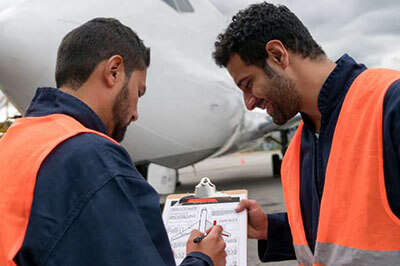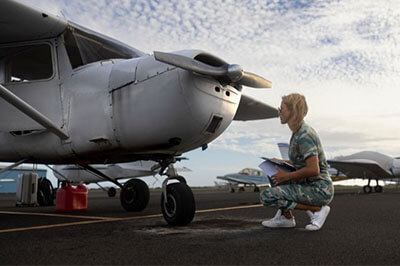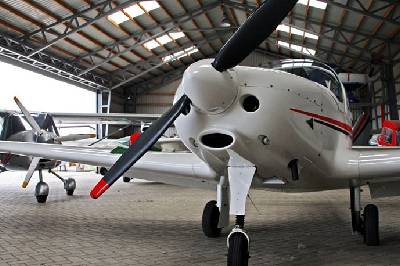Understanding how to conduct a pre-flight check is critical for pilots across all levels of expertise. This guide provides an in-depth exploration of the nuances and intricacies of pre-flight inspections, empowering you to perform them with absolute confidence.
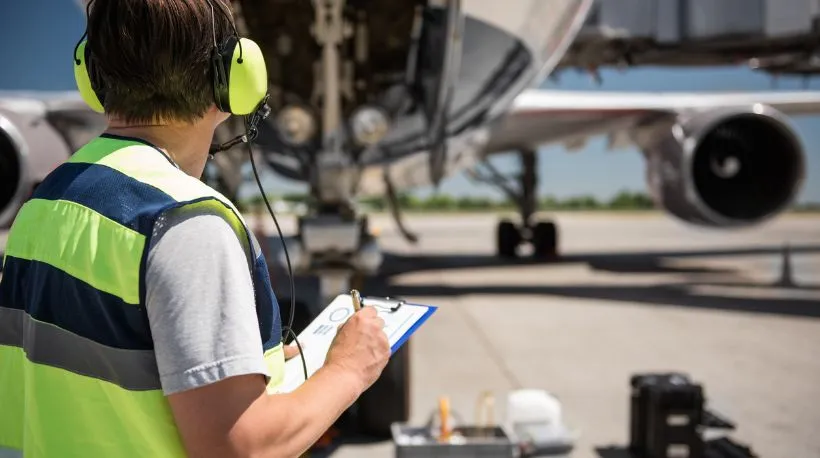
The cornerstone of every safe flight starts with the disciplined execution of a pre-flight check. Far from a mere formality, this procedure is a vital aspect of flight readiness, allowing pilots to proactively identify and address potential safety concerns. By adhering to a structured pre-flight checklist, you ensure that no detail, however minor, is overlooked. Our guide breaks down this complex process into clear, actionable steps infused with professional insights for a thorough pre-flight inspection.
For veteran aviators and those newly initiated into the world of flying, mastering pre-flight checks is non-negotiable. This guide will elevate your proficiency, enhancing the safety and reliability of every flight you command. Let's look at the critical elements of a pre-flight checklist, an indispensable tool in your aviation arsenal.
What Are Pre-Flight Checks?
Pre-flight checks are a series of thorough inspections a pilot conducts before each flight. This process is a critical component of flight safety, designed to ensure that the aircraft is in a condition for safe operation. It involves evaluating various aspects of the aircraft, from the structural integrity of its airframe to the functionality of its systems, instruments and aircraft engine parts.
The primary purpose of a pre-flight check is to identify any anomalies or maintenance needs that could compromise the safety of the flight. This inspection is the first defense against potential mechanical failures or system malfunctions. By conducting a thorough pre-flight check, pilots can detect issues on the ground where they can be addressed safely, rather than discovering them during flight when they may pose a potentially lethal risk.
The Pre-Flight Inspection Process
Safe flights start by adhering to a strict pre-flight inspection. Each aspect of this process is designed to identify potential issues that could compromise flight safety. Pre-flight checks include a thorough examination of the aircraft's exterior, interior, engine and propeller, as well as a review of essential documentation.
ARROW Check
The ARROW check is an acronym used to remember the necessary documentation required for flight:
- Airworthiness Certificate: This document proves the aircraft meets safety standards and must be displayed in the aircraft.
- Registration: The aircraft's registration must be current and onboard.
- Radio Station License: Although primarily applicable to international flights, this license is crucial for communication.
- Operating Limitation Documents: These include the Pilot's Operating Handbook or Aircraft Flight Manual and any supplemental documents. They provide vital information about the aircraft's capabilities and limitations.
- Weight and Balance Information: This documentation ensures the aircraft is loaded correctly and is within safe operating limits for weight and balance.
The ARROW check is essential to the pre-flight inspection process, ensuring legal compliance and operational safety.
Interior Inspection
Moving inside the aircraft, the interior inspection involves checking the cockpit and cabin. The primary focus here is on the instrument panel, lights, and avionics, ensuring all gauges and electronic systems are in the correct position and functioning correctly.
The control system, including yokes and pedals, is tested for responsiveness and freedom from obstruction. Seatbelts and harnesses are examined for integrity and security, an essential step for passenger and pilot safety.
Exterior Inspection
The exterior inspection is the third step in the pre-flight check process, focusing on the aircraft's physical condition. It begins with a general overview of the aircraft, looking for any signs of damage or wear that could impact its airworthiness. Pilots check the fuselage, wings and tail for dents, cracks or corrosion.
Attention is also given to the landing gear, tires, and brakes, ensuring they are in good condition and functioning properly. The inspection includes verifying fluid levels, such as oil, fuel and hydraulic fluids, to ensure they are within the recommended limits.
Engine and Propeller Checks
The engine and propeller are critical components of the aircraft, and their inspection is vital to the pre-flight check process. Pilots examine the engine for signs of wear, leaks or damage and check the propeller for nicks, cracks or any irregularities. It's important to ensure these components are physically intact and operationally sound.
Concluding the Inspection
Pilots must feel confident about the aircraft's condition after completing the pre-flight checklist. This process is not merely checking boxes but understanding the aircraft's current state and readiness for the intended flight. If any issues are identified, they must be addressed before takeoff. The pre-flight inspection is a critical step in the broader context of flight preparation, setting the stage for a safe and successful journey.
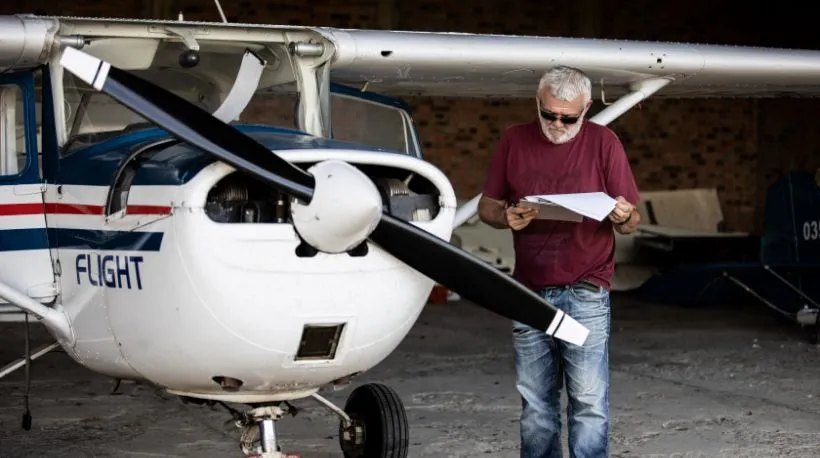
Using the Pre-Flight Checklist
A pre-flight checklist is a crucial ally in the pursuit of aviation safety. It is a dynamic document, evolving with the aircraft and the pilot's experience. As pilots progress, the pre-flight checklist remains a constant companion, guiding them toward safe and prepared flights.
Customizing Your Checklist for Specific Aircraft Models
While there are standard pre-flight checklists available, it is essential to tailor them to the specific model and configuration of the aircraft being flown. Different aircraft types may have unique systems and components that require specific checks. Additionally, different aircraft engines (like Lycoming and Continental® engines) will require different processes).
Pilots should work with maintenance teams or consult the engine's and aircraft's manufacturer guidelines to modify and adapt the standard checklist, ensuring it comprehensively covers all necessary aspects of their particular aircraft.
Tips for Efficient and Thorough Checklist Usage
Using a pre-flight checklist effectively requires more than just ticking off items. Here are some tips for maximizing its benefits:
- Consistency: Follow the checklist in the same order every time. This consistency helps develop a routine and reduces the chance of skipping items.
- Understanding: Know what each item on the checklist means and why it is important. This understanding helps identify potential issues more effectively.
- Double-Check: Always be willing to double-check items, especially if any aircraft performance or behavior changes were noted during the last flight.
- Stay Updated: Regularly review and update the checklist to reflect any changes in aircraft configuration or new safety guidelines.
Common Issues Identified During Pre-Flight Checks
Understanding and promptly addressing common issues identified during pre-flight checks are integral to ensuring flight safety. These inspections enable pilots to make responsible decisions regarding the aircraft's airworthiness. Here are some of the most common issues pilots can encounter and ways to respond.
Typical Signs of Wear and Tear
Regular use of an aircraft inevitably leads to wear and tear. Identifying these signs as early as possible is essential for maintaining airworthiness. Common indicators include:
- Surface Damage: Look for dents, cracks or corrosion on the aircraft's body. Pay special attention to the wings and fuselage.
- Tire Wear: Check for uneven tread wear, cuts or bulges in the tires, as they are crucial for safe takeoffs and landings.
- Fluid Leaks: Oil or hydraulic fluid leaks are tell-tale signs of potential engine or system problems.
- Control Surface Issues: Ensure that flaps, rudders and ailerons can move freely without obstruction or excessive play.
Recognizing Potential Safety Hazards
Some issues identified during pre-flight checks can pose significant safety risks. These include:
- Loose or Missing Fasteners: Any missing screws, bolts and other aircraft hardware can lead to structural failures.
- Damaged or Frayed Cables: Control cables should be intact and without signs of excessive wear.
- Inoperable Instruments or Avionics: Ensure all navigation and communication equipment functions correctly.
- Blocked or Restricted Control Movements: Any hindrance in control movement can severely affect aircraft handling.
Decision-Making Based on Identified Issues
Upon identifying any issues during the pre-flight check, pilots must make informed decisions:
- Assess the Severity: Determine if the issue is minor and can be fixed immediately or requires more extensive repairs.
- Consult Maintenance Personnel: Consult qualified maintenance personnel for complex or uncertain issues.
- Consider Flight Conditions: Assess whether the identified issue could be worsened by the day's flight conditions, such as weather or route.
- Make a Go/No-Go Decision: Based on the assessment and consultations, decide whether to proceed with the flight, delay for repairs or cancel.
How to Perform a Cessna 172 Pre-Flight Inspection
Check out this short video for a more interactive and detailed understanding of the pre-flight check process. You'll see a demonstration of a pre-flight inspection for a Cessna 172, one of the most popular aircraft models among general aviation pilots.
Frequently Asked Questions: Pre-Flight Checks
If you have any questions or would like to know more about pre-flight checks, check out the answers to our most frequently asked questions below.
How Long Should a Pre-Flight Check Take?
The duration of a pre-flight check can vary depending on the aircraft type and the pilot's familiarity with the aircraft. Generally, it takes between 15 to 30 minutes. However, it's crucial not to rush the process, as thoroughness is more important than speed.
Are Pre-Flight Checks Mandatory for All Flights?
Yes, pre-flight checks are mandatory for all flights, regardless of the aircraft's size or type. They are a critical part of flight preparation and are required by aviation regulatory authorities.
Can Weather Impact a Pre-Flight Inspection?
Weather conditions can significantly impact a pre-flight inspection. For instance, additional checks for ice and snow on the wings and control surfaces are necessary in cold weather. Similarly, in hot weather, it's important to check for signs of overheating in the engine and avionics systems. Weather also affects how you assess the aircraft's capabilities against the expected flight conditions.
Transform Pre-Flight Check Problems Into Solutions at Air Power Inc.
As we wrap up this comprehensive guide on pre-flight checks, it's important to remember that the safety and reliability of your aircraft are paramount. During your pre-flight inspections, if you encounter any broken, missing or failing components, rest assured that Air Power Inc. is here to support you. We pride ourselves on offering the finest aircraft parts from the industry's top-rated manufacturers, ensuring you can access the best OEM replacements available.
With Air Power Inc., you can confidently address any issues uncovered during your pre-flight checks, knowing you are equipping your aircraft with high-quality, dependable parts. Don't let equipment concerns keep you grounded; visit Air Power Inc. for all your aircraft part needs.
Shop Aircraft Parts
Related Articles: Pre-Flight Checks

